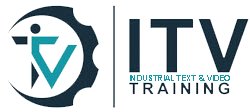AREAS COVERED
ControlLogix Program
The ControlLogix Training Series has 10 courses cover the most critical and fundamental skills that everyone who is involved with a ControlLogix system in a manufacturing plant maintenance department needs to know.
Technicians going through the program will...

• Thoroughly understand the integrated architecture of the ControlLogix system so that we can troubleshoot the whole system
• Know how the Studio 5000 is also a great tool for troubleshooting a system
• ControlLogix hardware composition which provides a solid foundation on input and output addressing and "tag" referencing
• Create a project based on the fundamentals of the hardware composition and architecture and how it relates to the inputs and outputs that we troubleshoot in a control system,
• How we establish proper communication and connection with a controller to download a project and go on-line in order to troubleshoot any problems in the system.
• Project organization and the understanding of frequently used tag structures
• Ladder structure and basic instructions that we will need to understand to properly troubleshoot programming code
• Creating and editing tags and code and deal with the importance of documenting our troubleshooting changes in the system.
• Troubleshooting using the Studio 5000 software and learn how to use several special program control instructions for testing and troubleshooting sections of ControlLogix code.
• Troubleshooting discrete and analog I/O hardware components and the importance of understanding module configuration to avoid problems during troubleshooting.
• Remote I/O subsystems as well as troubleshooting the controller and power supply.
• Use of the forcing and toggling functions when troubleshooting.
• How to solve other potential problems that we can face during troubleshooting such as noise and interference in the system as well as heat.
• Use of the "Trending" function to troubleshoot a system.
• How to use the "Compare Projects" tool to compare two ControlLogix projects to find the differences.


